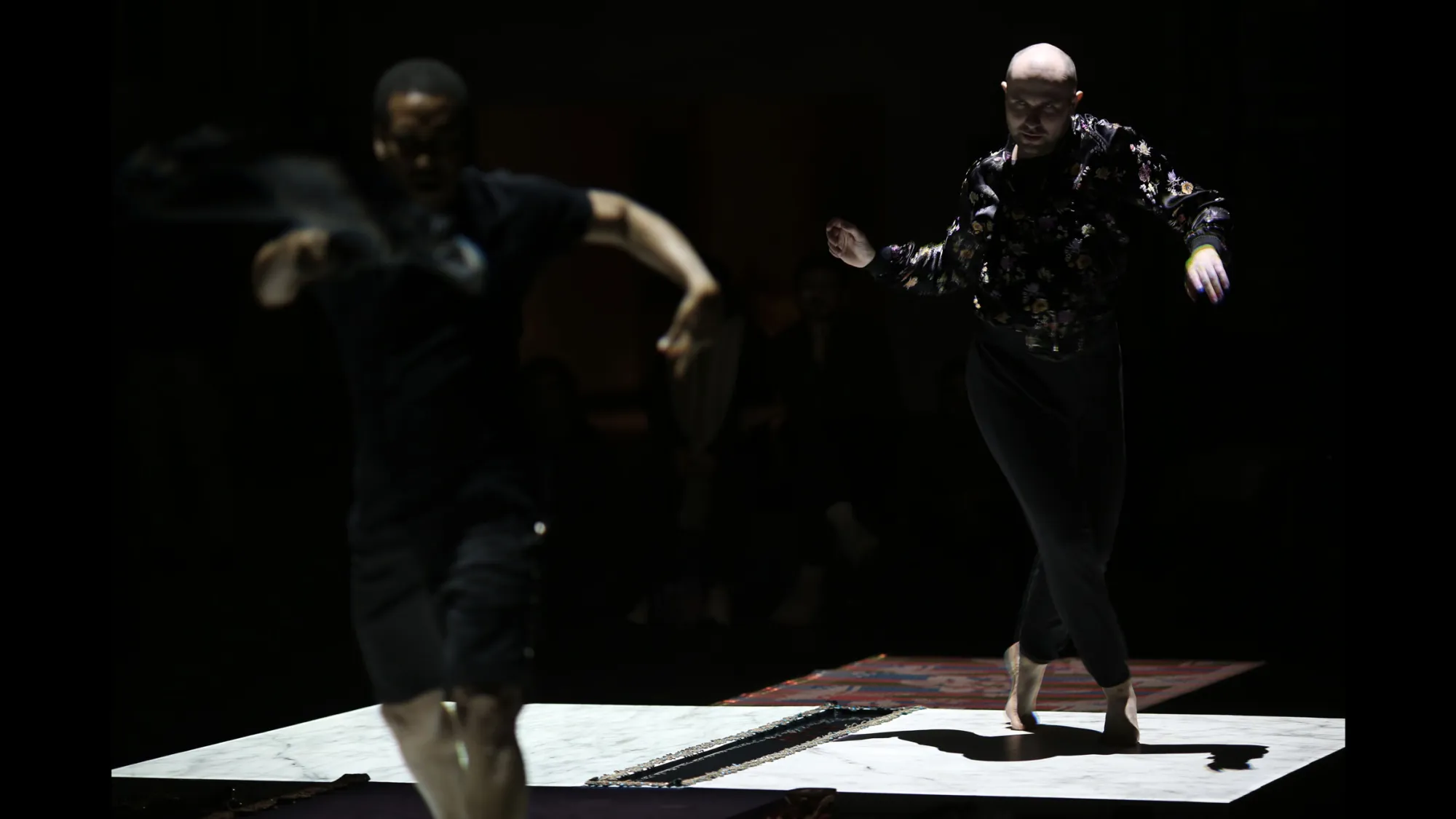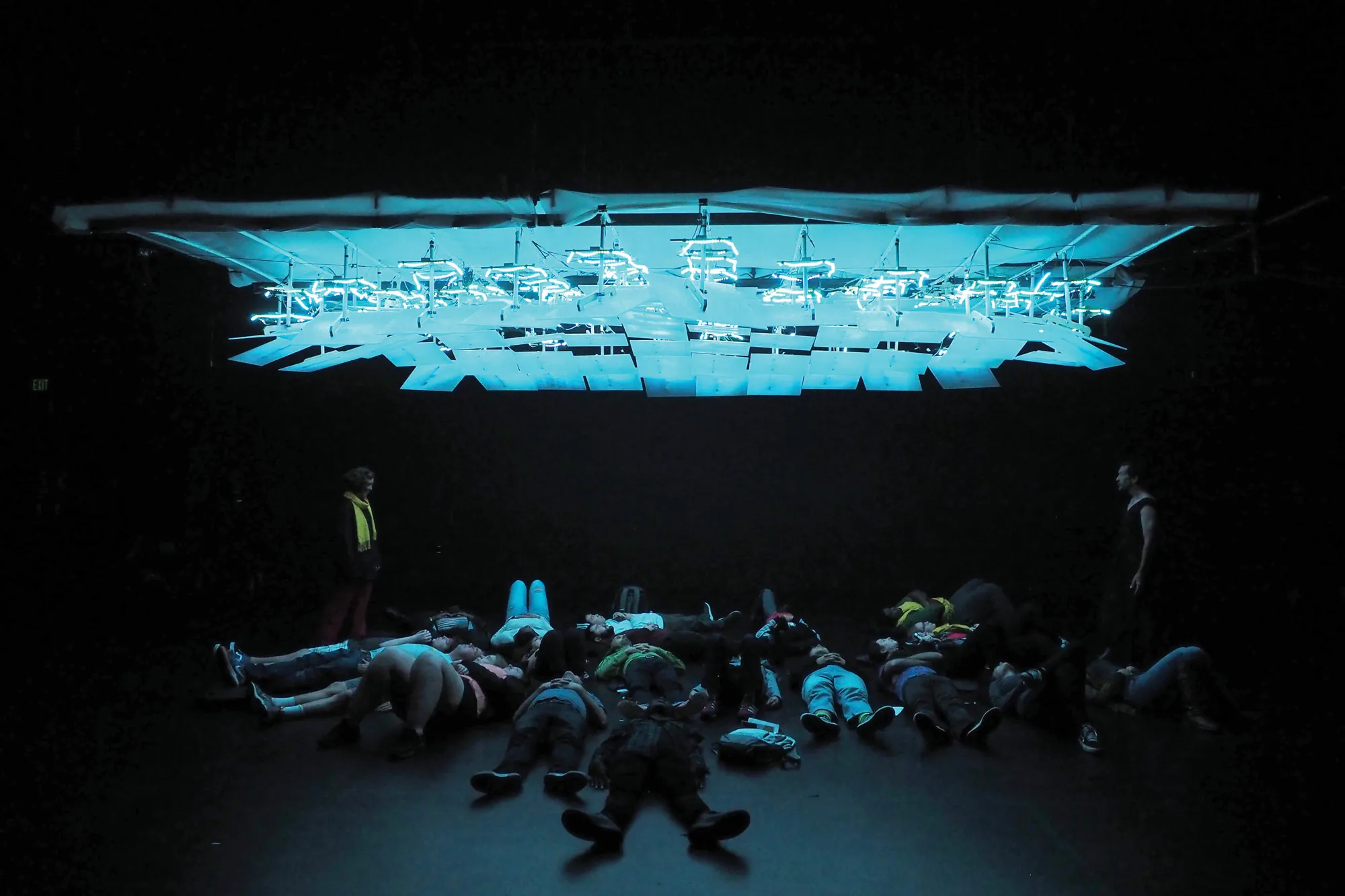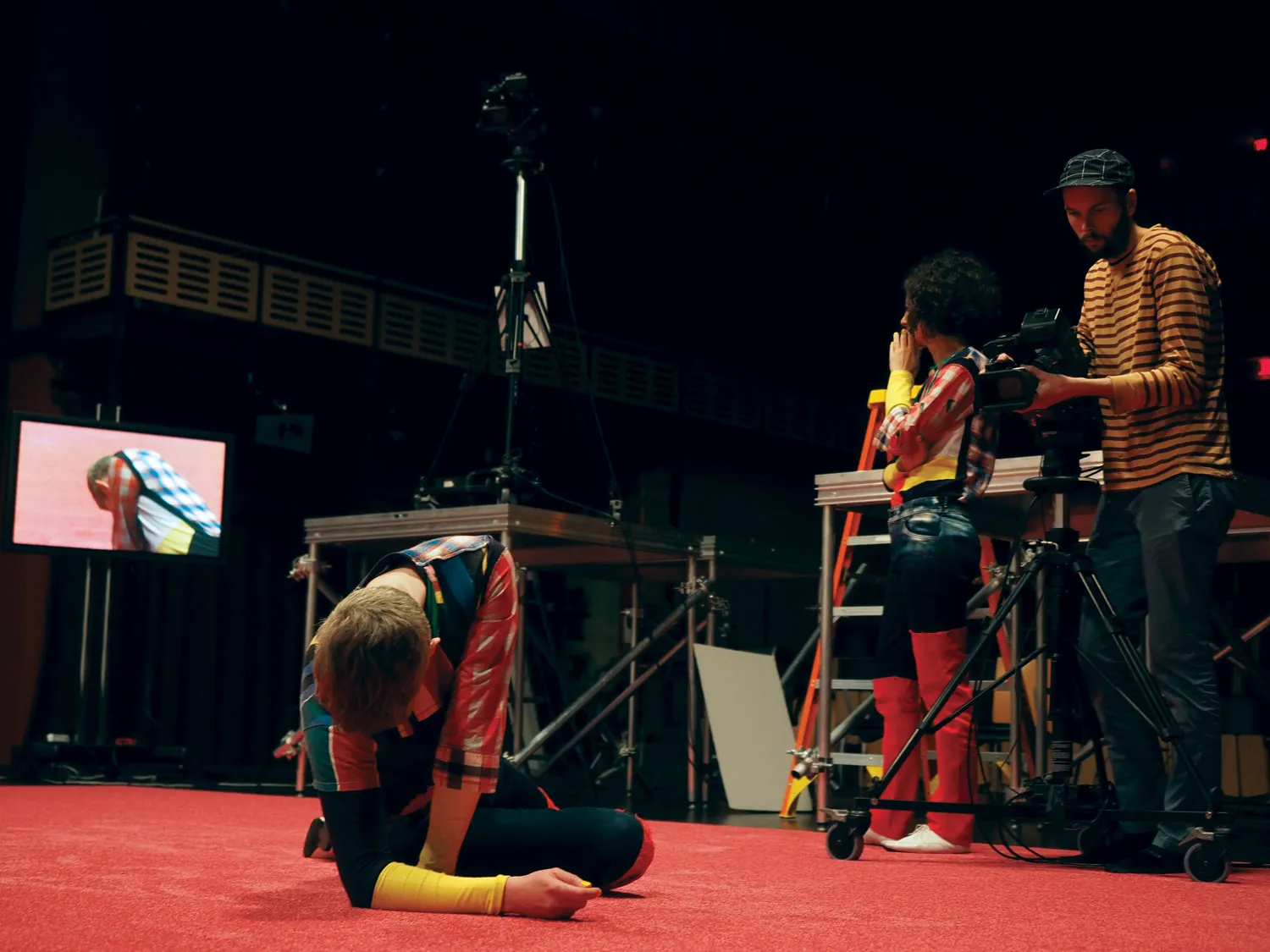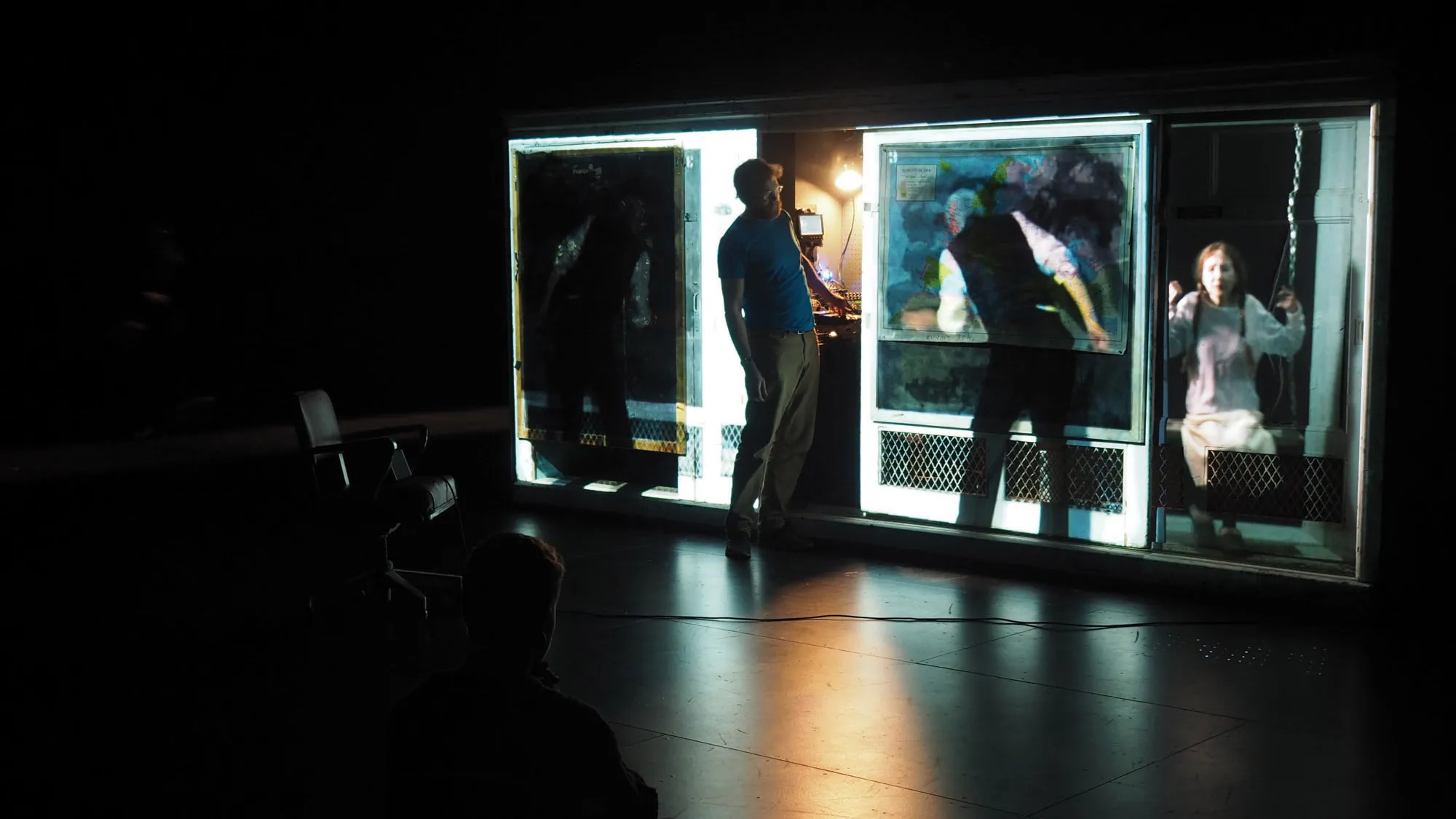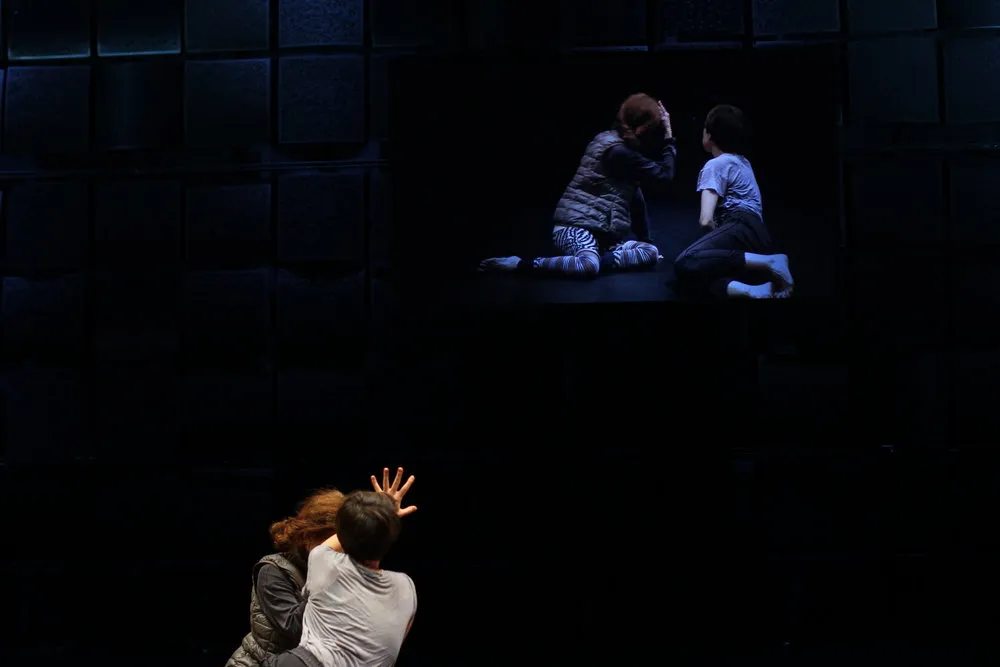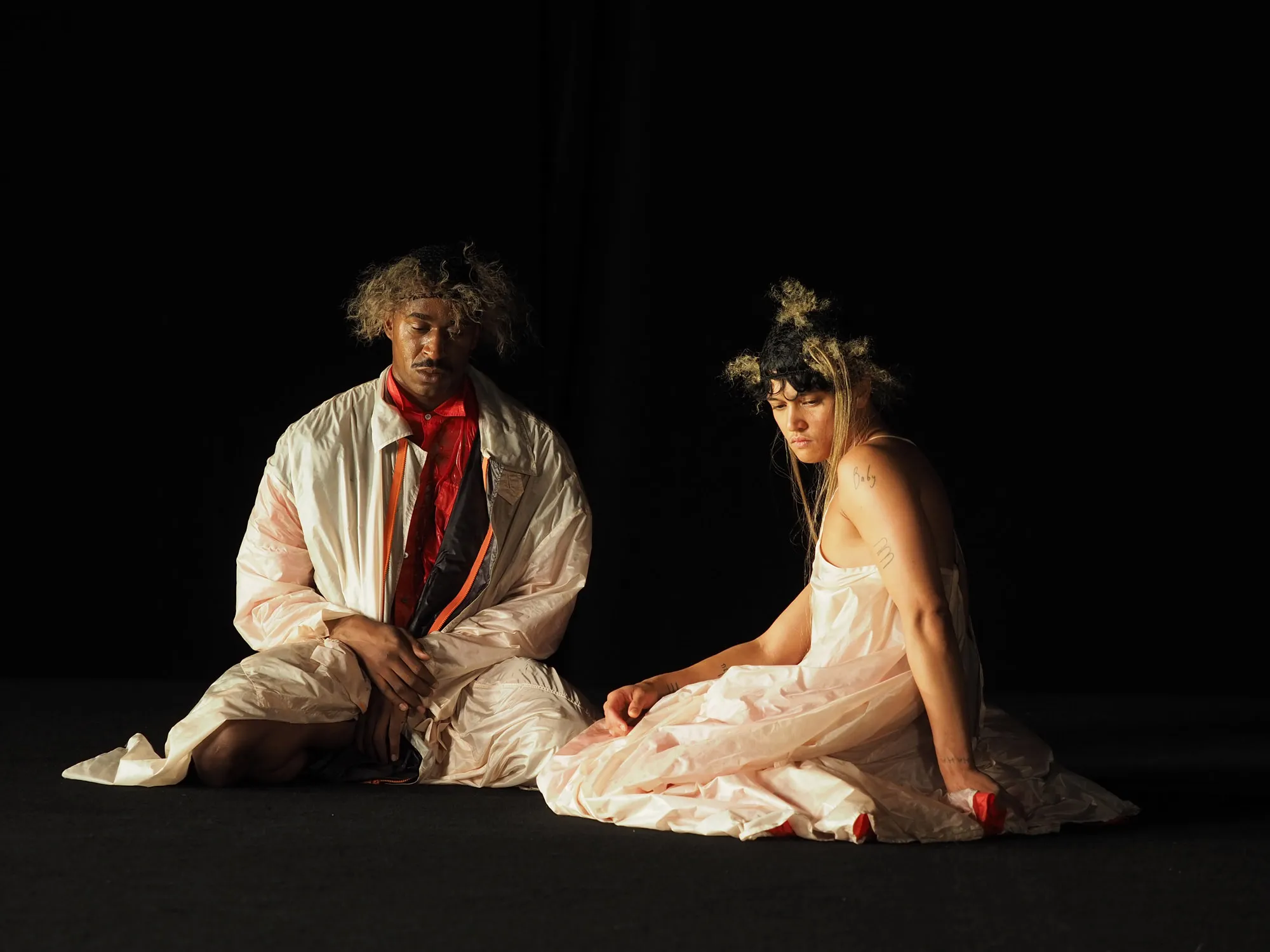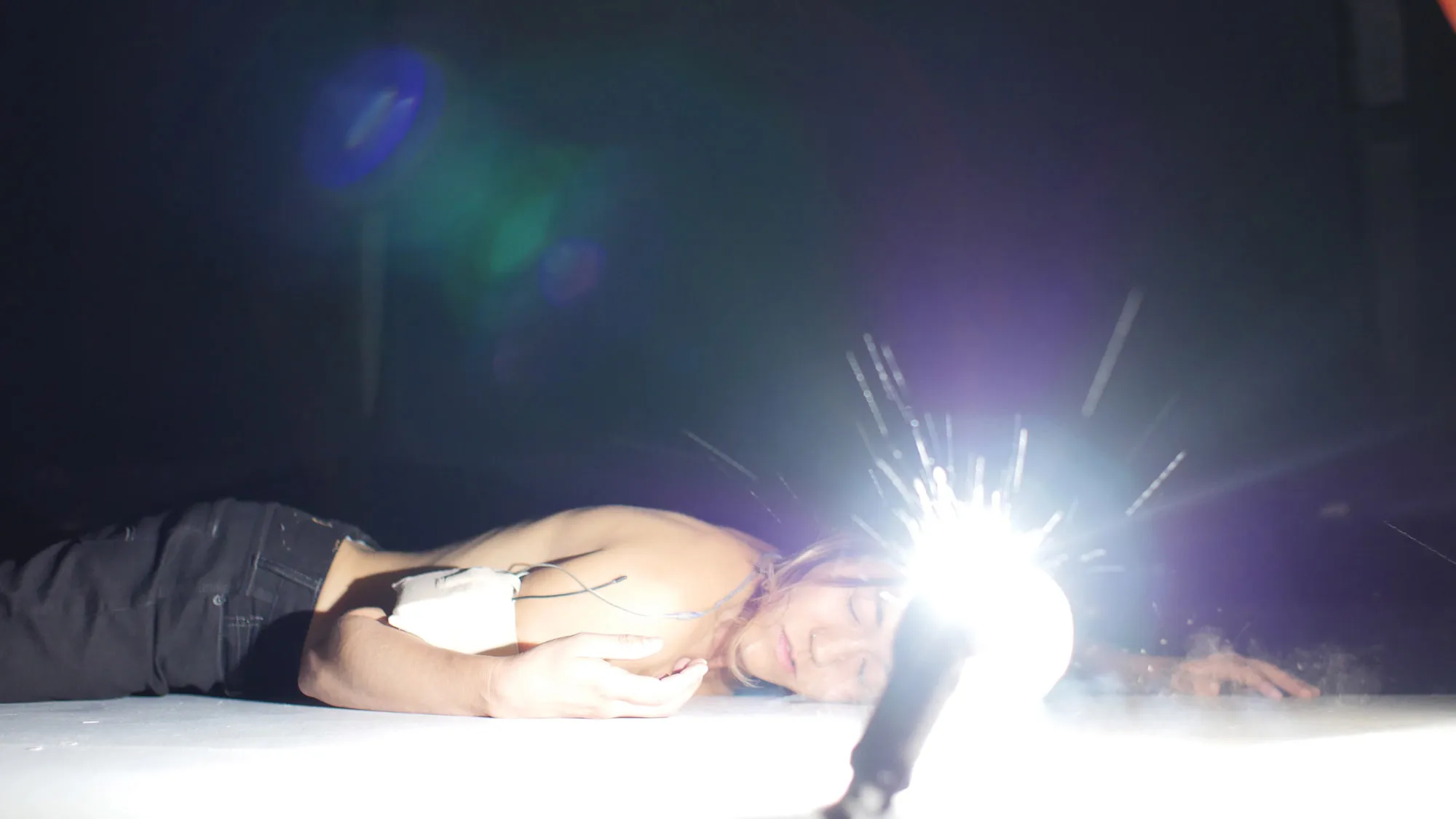Over the course of four evenings and across a range of sites, Mary Armentrout Dance Theater will perform the roving work Listening Creates an Opening. Members of the group—choreographer Mary Armentrout, video artist Ian Winters, and composer Evelyn Ficarra—have been working in residence over the last two-and-a-half years to conceive and produce the EMPAC commission.
Listening Creates an Opening focuses on how various types of technology impact our physical experience of moving through the world. By inviting the audience to move with the performers through a variety of environments, the performance explores what types of histories and contexts reveal themselves from a consciously embodied perspective. Local artist Jack Magai serves as the guide, leading the audience from a small living room in the turn-of-the-century Off Campus Commons building at Rensselaer, to the highly technical theatrical setting at EMPAC, and down into urban sites in Troy, ranging from a parking lot to a hair salon, to experience the hills at sunset and the Hudson River at dusk. Singers Allison Easter, Darcy Dunn and cellist Patrick Belaga help round out the subtle, quirky, and aesthetically adventurous performance, which also features projected scenery from a year-long time-lapse video taken inside the EMPAC building, and live performance vignettes that repeat and build over the course of the show.
Mary Armentrout is a San Francisco-based choreographer and performance artist, and director of Mary Armentrout Dance Theater. She is the winner of an Isadora Duncan Dance Award, one of the most prestigious honors for Bay Area choreographers. She has long collaborated on her site-specific and staged works with Ian Winters and Evelyn Ficarra. Winters develops visual and acoustic media environments for stage. Together, Armentrout and Winters run their studio The Milkbar in Richmond, CA. Ficarra is lecturer in the music department at the University of Sussex, where she is also the Assistant Director of the Centre for Research in Opera and Music Theater.
Accessibility + Performance Information
EMPAC is an accessible venue. The lobby is accessible via the double doors facing Rensselaer’s campus with an entrance off of College Avenue. All-gender wheelchair-accessible restrooms are available on all public-access levels of the building. The main audience entrance to the theater is wheelchair accessible and located on EMPAC’s 5th floor, which can be accessed from the lobby by elevator.
If you have any questions about access, please contact EMPAC Box Office Manager John Cook or call 518-276-2822 (voice only).
This is a promenading performance with the audience standing and moving, sometimes long distances, between venues. Please wear comfortable footwear, dress for the outdoors, and let our box office know if you need assistance or wheelchair accommodation. We will have accessibility accommodations for those unable to walk long distances or stand for extended periods. Please share any specific access requests in the comments form of your ticket, in order to help our Front of House team prepare to welcome you. The performance is approximately three hours long.
Performance will run rain-or-shine. Please dress accordingly.
Main Image: Production still: Listening Creates an Opening. Photo: Mick Bello/EMPAC.
